The Gran Sasso and Monti della Laga National Park represents one of the highest expressions of Mother Nature in Italy. It would be enough to start from the numbers to understand its richness and biodiversity, but what makes it even more of a recommended destination for a trip is everything within it: history, art and culture among castles, abbeys, basilicas, medieval villages perfectly preserved in their authenticity, which are part of the Park ’s treasure on par with flora and fauna. It is one of the largest nature reserves in our country extending over more than 150 thousand hectares (in 41 municipalities, mostly in Abruzzo), with a mountainous territory part of the Apennines, of which it is the part that reaches the highest altitude with 20 peaks over two thousand meters up to the 2,912 meters of Corno Grande. It is composed of the Gran Sasso Massif of Italy and the Monti della Laga group of mountains and also includes the southernmost glacier in Europe. Within it live 500 deer, more than 1,000 chamois, 120 wolves, 11 pairs of golden eagles, the peregrine falcon, the alpine finch (and more) in a natural environment with 2,364 floristic species surveyed. In this context, the environmental, tourism and cultural project carried out by the Park Authority is one of conservation and respect for the historical heritage present. Let us see, however, which destinations are in our opinion unmissable on a trip to the Gran Sasso.
There is a castle overlooking the Tirino Valley and the Navelli plain that in 2020 was included by National Geographic in their ranking of the 15 most beautiful in the world: the castle of Rocca Calascio. Perched on an impassable ridge 1462 meters above sea level, of Norman origin, it is the highest fortification in Abruzzo and the set of some very famous films such as The Name of the Rose. Historical films, but also fantasy settings given the unique landscapes present. Owned by the Barons Carapelle, it was later owned by the Piccolomini to whom we owe the reinforcement of the walls and the 4 towers (with battlements) circular very scarpy, at the corners of a central “male” with a square plan. All in very white, square ashlar stone. It was once a populous center being a point of passage of transhumance, and this is evidenced by the remains of several sacred buildings: at least three churches and a convent.
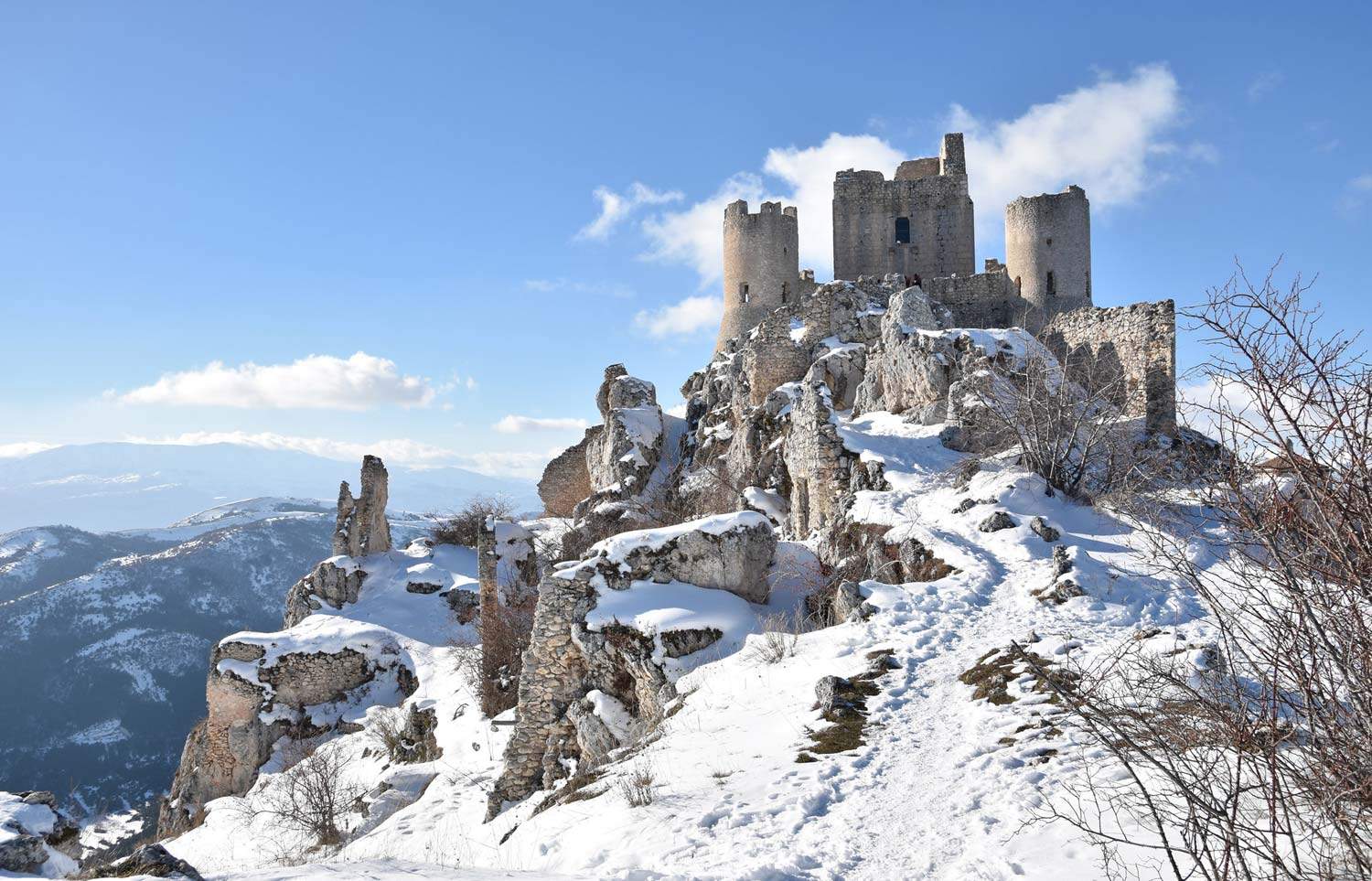
Depending on personal inclinations, one can associate Campo Imperatore with skiing (with 10 slopes throughout the Comprensorio); the atmosphere of a small “Tibet,” as Fosco Maraini called it, having in mind the Phari Dzong valley, the summer pastures on these immense plateaus completely bare of vegetation, or the famous episode in recent history of the liberation of Benito Mussolini by the Germans in a daring operation in 1943. We are 1,800 meters above sea level on the Gran Sasso massif, and this is L’Aquila’s ski resort, among the highest in the entire mountain range and among the snowiest, with ski lifts built as early as eighty years ago under Fascist-era development projects. And it is precisely to Benito Mussolini that the history of Hotel Campo Imperatore at 2130 meters above sea level (on the slopes of Mount Aquila) is linked since it was the place of imprisonment where he was confined by the king while waiting to negotiate the armistice with the Allies in August/September 1943. The room that was in use by Mussolini moreover was left as he left it on September 12, 1943 when the Germans arrived to free him by hang glider. At Campo Imperatore there is also an important astronomical observatory (run by the Roman section of the National Institute of Astrophysics in collaboration with the Collurania Astronomical Observatory and the University of L’Aquila) that was built between 1948 and 1955. A place more than suitable for astronomical observation both because of its altitude (it is the highest placed in all of Italy) and its distance from sources of light pollution.
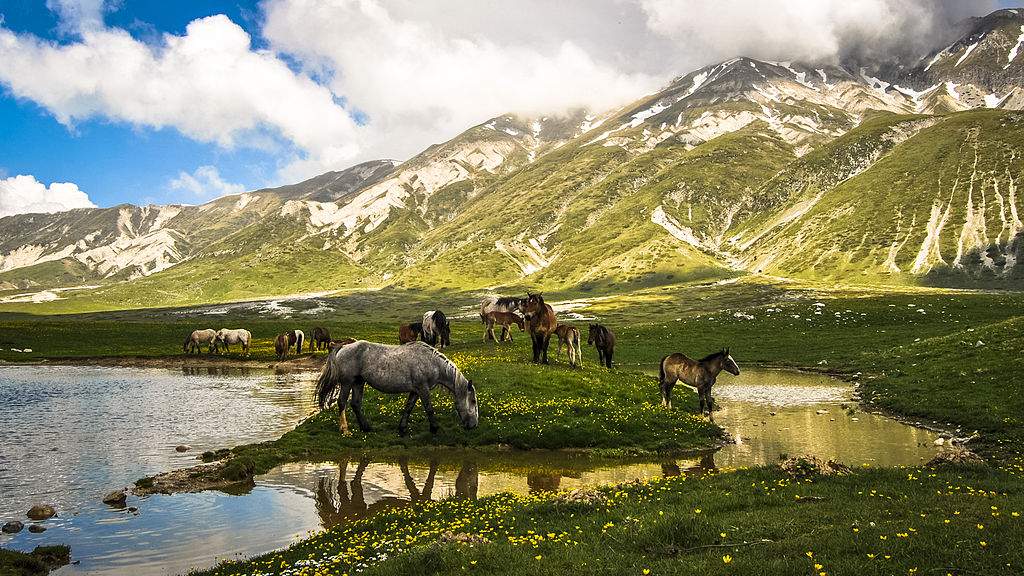
We are in a village rich in the history of Abruzzo, and it is from here that what has become a sort of symbol of the region comes: the Capestrano Warrior, a splendid sculpture that, as the inscription on it in the Picenian language reads, was made for Prince Nevius Pompuledio (today it can be admired at the National Archaeological Museum in Chieti). The town (we are in the province of L’Aquila, in the Tirino Valley) does not reach a thousand inhabitants, but it has a great historical importance having been the seat of the families who dominated the territory (which led it to be the stronghold of a marquisate and a principality), including the Piccolomini family whose castle still exists today, on a hill guarding the valley with its cylindrical towers and square tower.
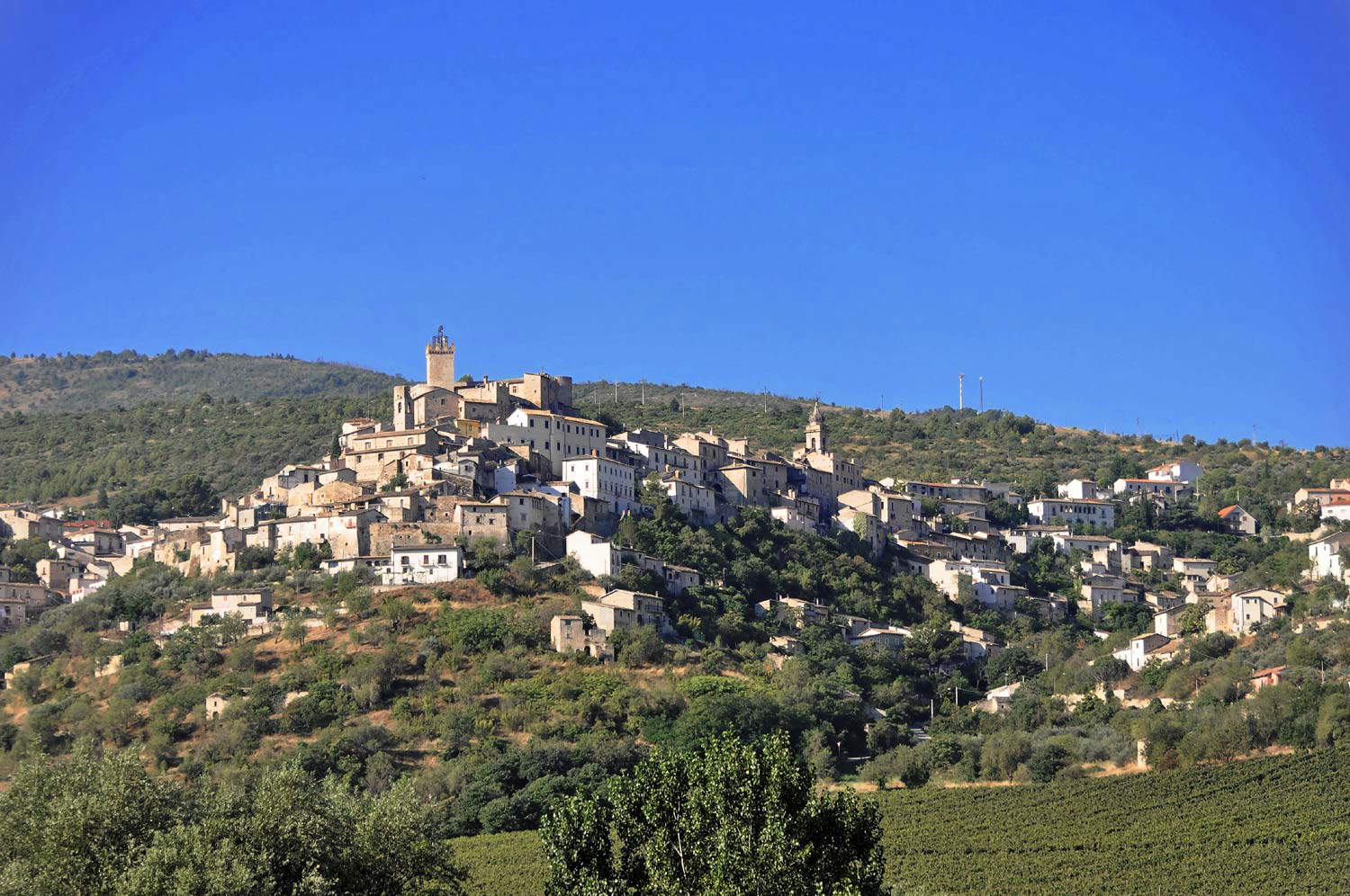
But the roots of this place go all the way back to Roman times with evidence indicating that the valley was home to the populous city of Aufinium, a center of great cultural importance and even the site of a philosophical school. In addition to the castle, of primary importance are the archaeological area and the Abbey of San Pietro ad Oratorium whose church has three naves with an apse at the end of each. Stone pillars support round arches and on the facade is the famous and mysterious magic square containing the inscription SATOR AREPO TENET OPERA ROTAS.

The municipality at the center of disputes, battles and changes of ownership and domination has managed to carve out its own identity over the centuries, but its peculiarity today is being the municipality where there is one of the highest artificial lakes in Europe. In fact, the lake is located at an altitude of 1313 meters. Initially the basin was a pasture area and then a quarry until three dams were built in 1939. Today, therefore, it is a highland resort where one can enjoy impressive mountain views and enjoy a variety of water sports.
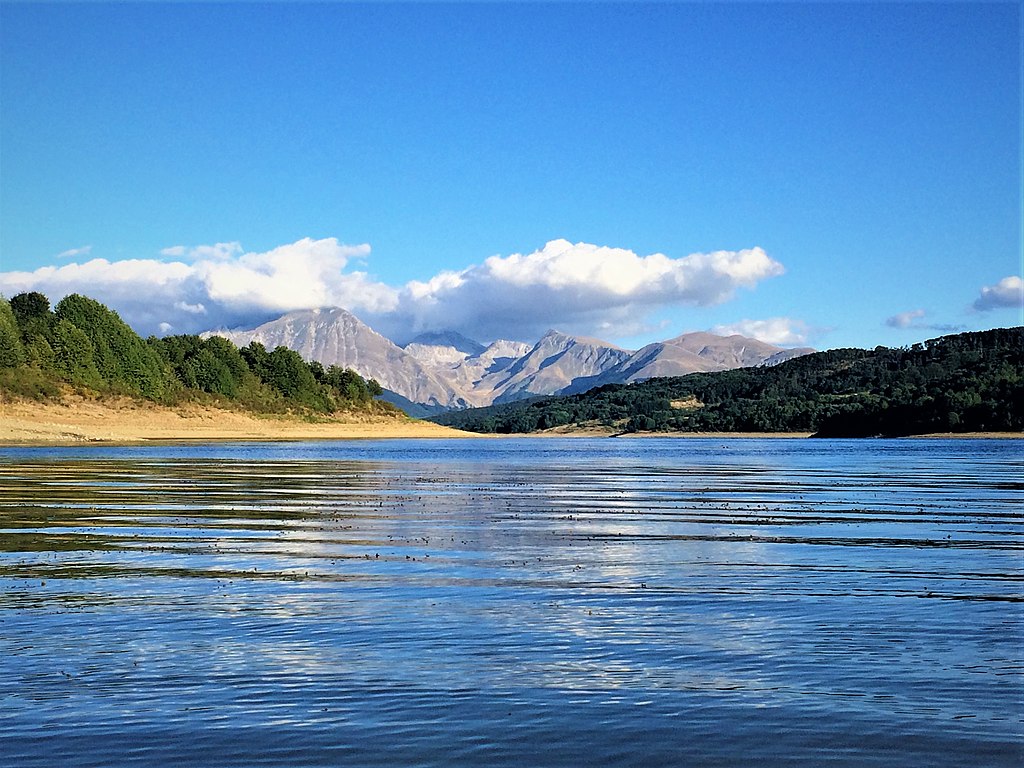
Castelli is renowned for ceramics where the art of majolica has been handed down for centuries and where the streets are full of workshops showing how master craftsmen work it. A point of artistic interest where one can admire such ceramics is the country church of San Donato: here the majolica ceiling is truly unique and because of its uniqueness has been called by Carlo Levi “the Sistine of Majolica,” while for scholar Timothy Wilson, among the world’s foremost experts on Renaissance ceramics, it represents “one of the most ambitious feats of Italian majolica at the end of the Renaissance.” There is also the Ceramic Art Institute, which preserves a ceramic nativity scene with some 60 characters, and the Museum of Ceramics housed in the former Franciscan convent of Santa Maria di Costantinopoli: inside it contains a very rich collection of majolica dating from the early Middle Ages to the present day and including the works of Castelli’s leading master ceramists. Castelli is also a good starting point for excursions to the peaks of the Gran Sasso d’Italia massif, such as Mount Camicia (2,750 m) or the Campo Imperatore Plateau, the largest in the Apennines, where there are also ski facilities. Hundreds of trails through which to discover pristine environments rich in flora and fauna of great interest complete the nature offerings.
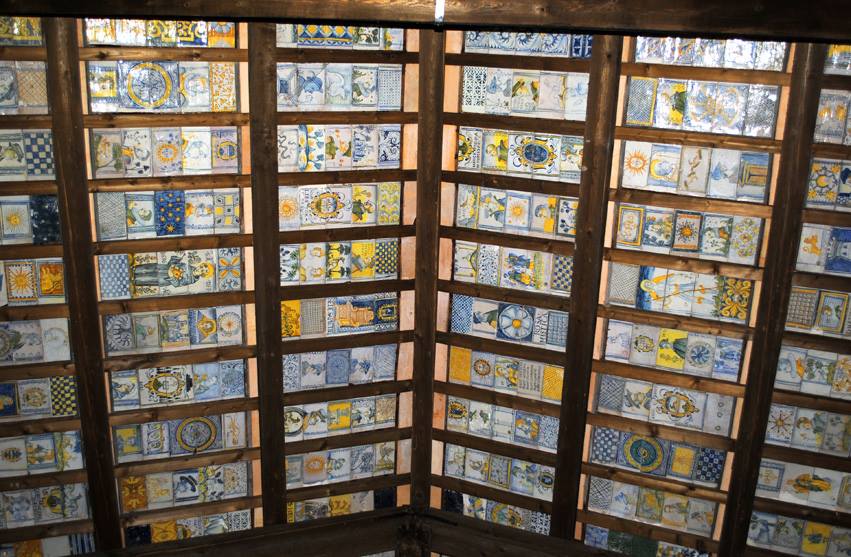
The municipality of Arsita, in order to raise awareness of the complete preservation of the fauna of this territory, has designed a museum totally dedicated to the figure that in the collective imagination was seen as a killer, a predator to be feared: the wolf. An animal that populates the Park extensively, you can see it in the woods or hear its howl with all its bearer of fear and attention. A museum created therefore, in the intent of the creators, to describe the figure of the wolf in a new way, outside of stereotypes. The set-up uses explanatory panels and a multimedia and sensory path in order to accomplish an interchange of involving and new sensations for humans with the aim of transforming what was a target to hit into an element of coexistence, as with other animals in the Park, favoring a thorough and correct knowledge of it.
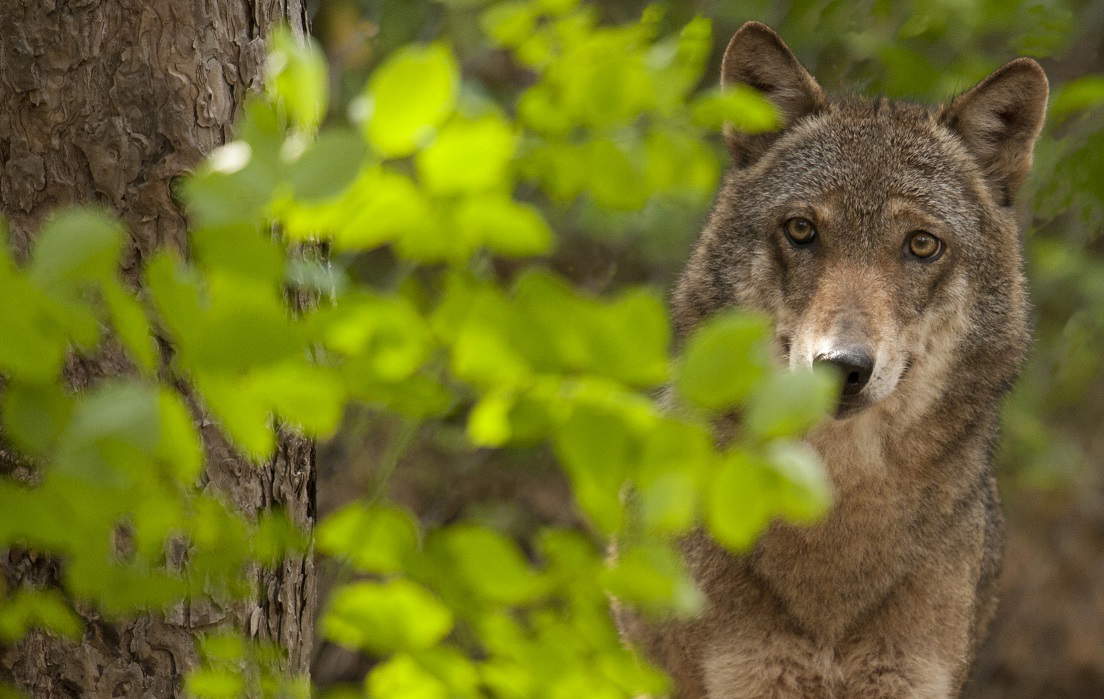
The Benedictine Abbey of San Clemente a Casauria (in the Pescara Valley), founded in 871, is one of the greatest examples of medieval religious architecture in south-central Italy and was declared an Italian national monument in 1894. In fact, it is of such preciousness that it is almost considered as a true museum in situ given the presence of the artistic artifacts preserved inside: from the ambo to the candelabra, from the urn to the altar, from the “porch of Leonate” to the central portal. The main entrance door is made of bronze with 72 decorative panels and a rich sculptural apparatus characterizing the lunette, lintel and jambs make it an artifact of great interest. The bas-reliefs describe the foundation, donation and history of the abbey. Built by Emperor Ludwig II of the Holy Roman Empire on the occasion of the transfer of the remains of the martyred Pope Clement I (the fourth Pontiff of the Catholic Church), the abbey owes its present conformation to Abbot Leonate, who, from the second half of the 12th century, promoted its rebirth and later became the political and economic center of reference for a vast territory. The church housed the relics of Pope Clement I until the construction of the new Basilica of St. Clement at the Lateran in Rome.
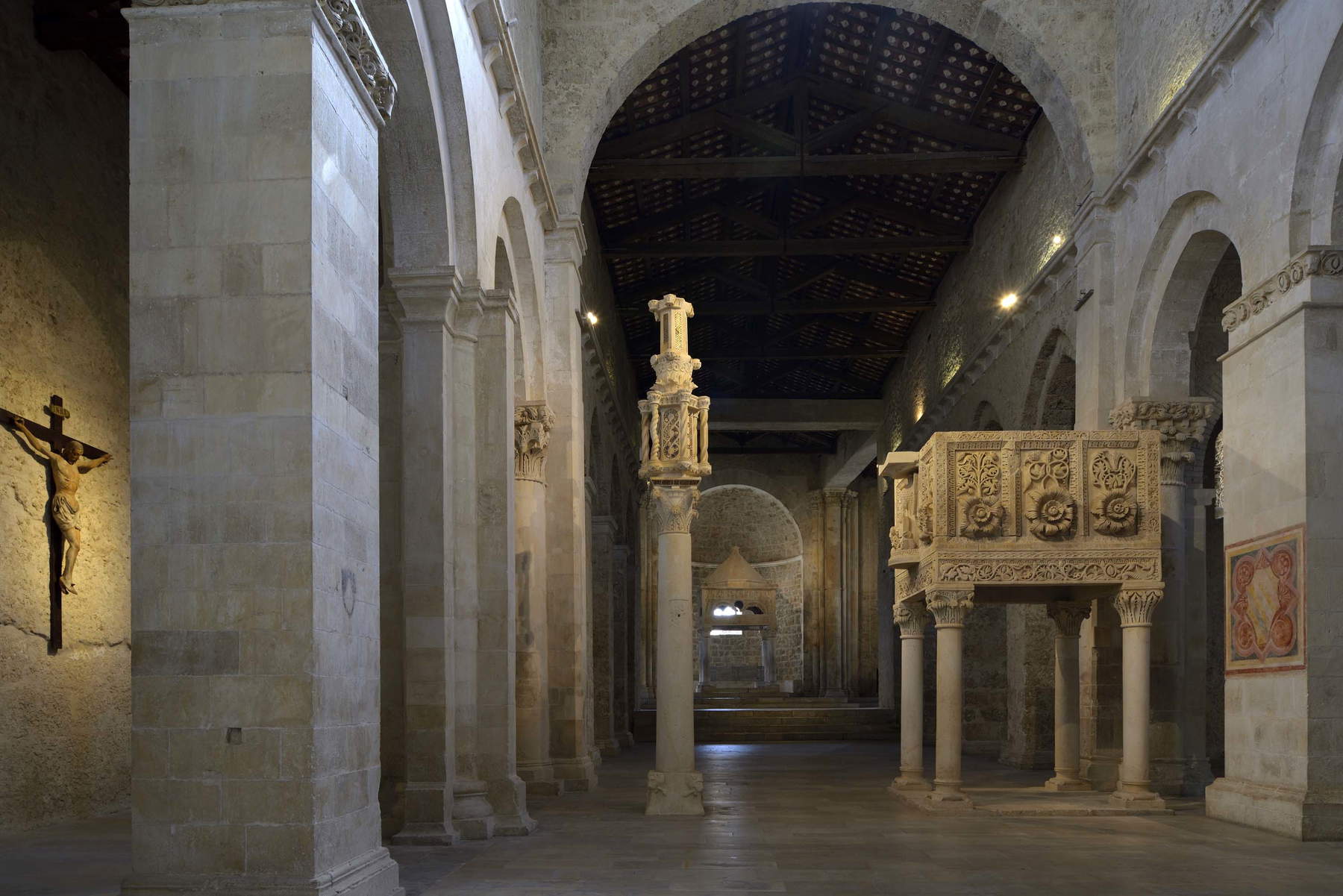
This is perhaps the best-known village among those visited in the Gran Sasso National Park. Located on the top of a hill at an altitude of 1,251 meters, it fascinates with its white limestone buildings enclosed in a village with seven centuries of history, since its events begin in the 14th century, and it was also a Medici possession (Costanza Piccolomini, feudal lord of these lands, ceded Carapelle and the surrounding localities, including Santo Stefano di Sessanio, to Francesco I de’ Medici in 1579). Despite having been hit by two powerful earthquakes, the one in 1703 and the one in 2009, Santo Stefano di Sessanio has been excellently preserved and it is therefore possible to see many of its ancient buildings, such as the church of Santo Stefano Martire, the Medici Tower (which collapsed in 2009 but has been rebuilt: the work is completed in 2021), the Chapel of Santa Maria delle Grazie, and the Medici Palace, also known as the Palazzo del Capitano. Santo Stefano di Sessanio is now part of the “Borghi più belli d’Italia” and is also known because here the Italian-Swedish entrepreneur Daniele Kihlgren opened a very popular albergo diffuso, created thanks to the resources he provided to recover the village after the 2009 earthquake.
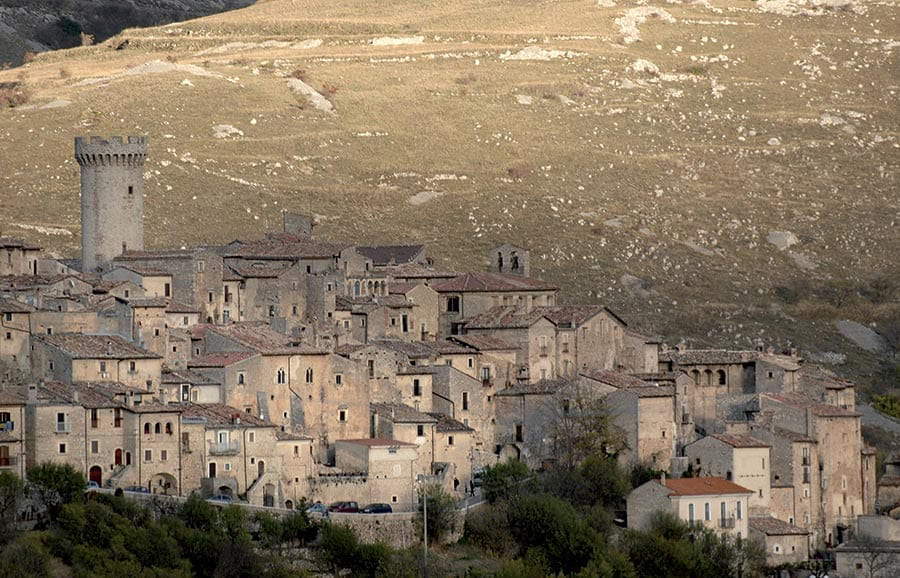
The archaeological site of Amiternum is located about 10 kilometers from L’Aquila and with the remains of a theater, amphitheater of a domus and a villa testifies to the only Italic city founded by the Sabines, which in the Augustan age had tens of thousands of inhabitants given the importance of the position on the road system located along the ancient Via Cecilia that reached as far as Hatria. The Via Claudia Nova and two branches of the Via Salaria also departed from the city. The birthplace of Sallust and Appius Claudius Blind, famous for initiating the construction of the Via Appia in 312 B.C., according to tradition Amiternum was also the birthplace of Pontius Pilate because when the Spaniards in 1580 discovered the first remains they also found a chest with scrolls in Hebrew with the condemnation of Jesus written on it. Although the scroll was declared apocryphal, Pilate’s presence here is strong: there is a Lake named after him since that would be the place where his body was thrown after being executed (thus no burial, double punishment) on the orders of Emperor Titus Vespasian for not preventing Jesus’ crucifixion. He also appears to have owned a villa at the place now called the mountain of Pilate, near Fontecchio. Amiterum is also mentioned by Virgil in the Aeneid as proof that it was important and well-known.
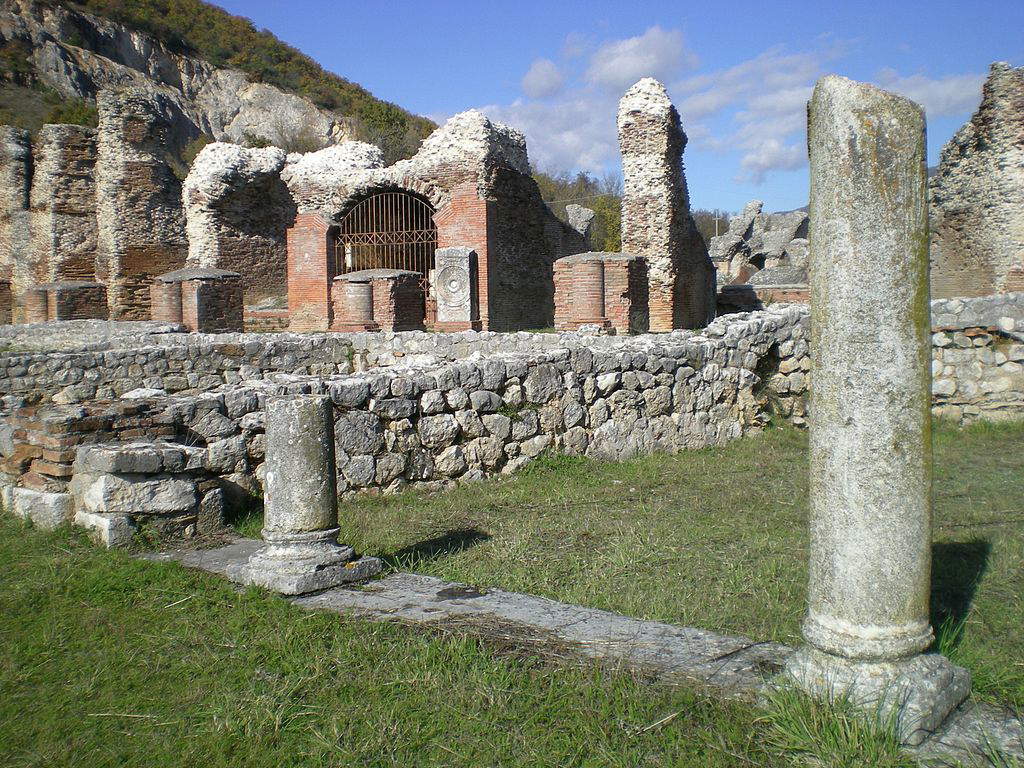
Here we discuss what is widely described as one of the most monumental and impressive works of military engineering ever built in Italy: the Fortress of Civitella del Tronto. The Fortress overlooks Civitella del Tronto and controlled the territory dominating the Salinello valley with tactical and defensive functions thanks to a mighty structure with its more than 500 meters in length and 25,000 square meters of surface area, characterized by an elliptical shape on top of a rocky travertine spur 600 meters high. Its function was to guard the border between the Kingdom of Naples and the Papal States after the agreement between the Angevins and the Papal States made around the end of the 13th century. This position, combined with the rugged nature of the terrain, made the town one of the most strategically important points for controlling the northern customs. It was one of the most important posts in the Kingdom of Naples and was the last bastion of the Kingdom of the Two Sicilies to fall before the Piedmontese in the nascent Kingdom of Italy: a siege that lasted from October 1860 to March 20, 1861, three days after the official proclamation of the new Kingdom. Now fully visitable thanks to a restoration after countless alterations, demolitions and depredations, it also offers a weapons museum inside. It is among the most visited sites in Abruzzo. The village of Civitella del Tronto is with the historic center enclosed within the mighty walls, is of aristocratic beauty, rich in art and history.
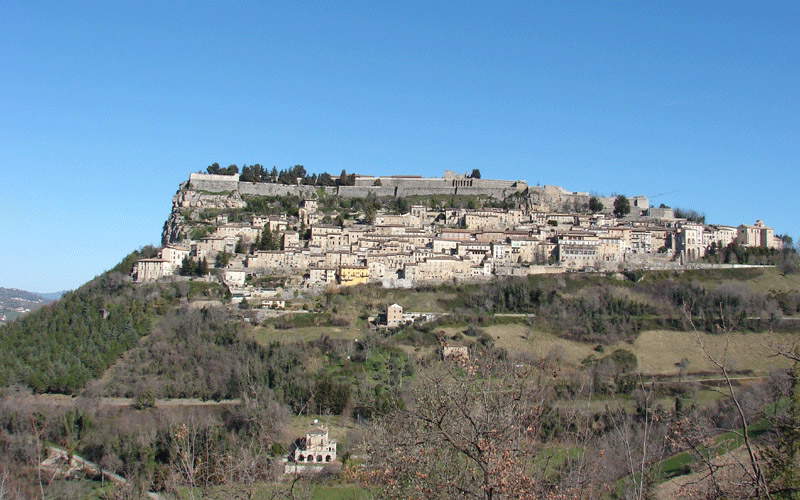
 |
| Gran Sasso Park, what to see: 10 places not to be missed |
Warning: the translation into English of the original Italian article was created using automatic tools. We undertake to review all articles, but we do not guarantee the total absence of inaccuracies in the translation due to the program. You can find the original by clicking on the ITA button. If you find any mistake,please contact us.